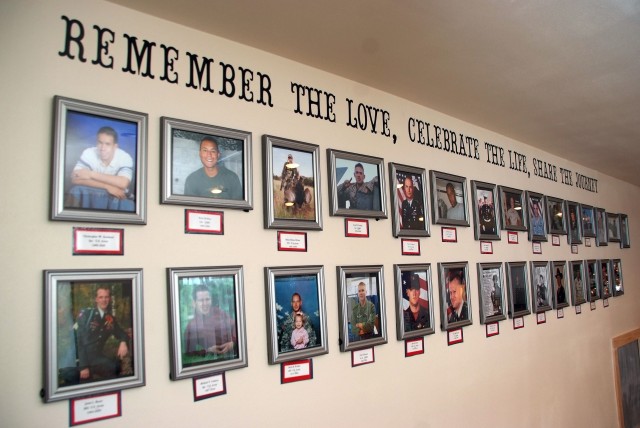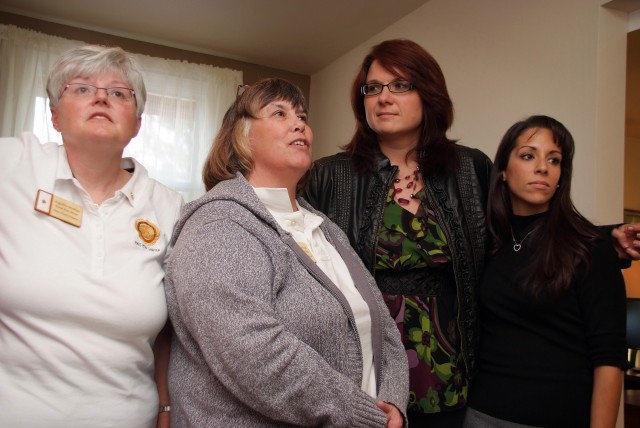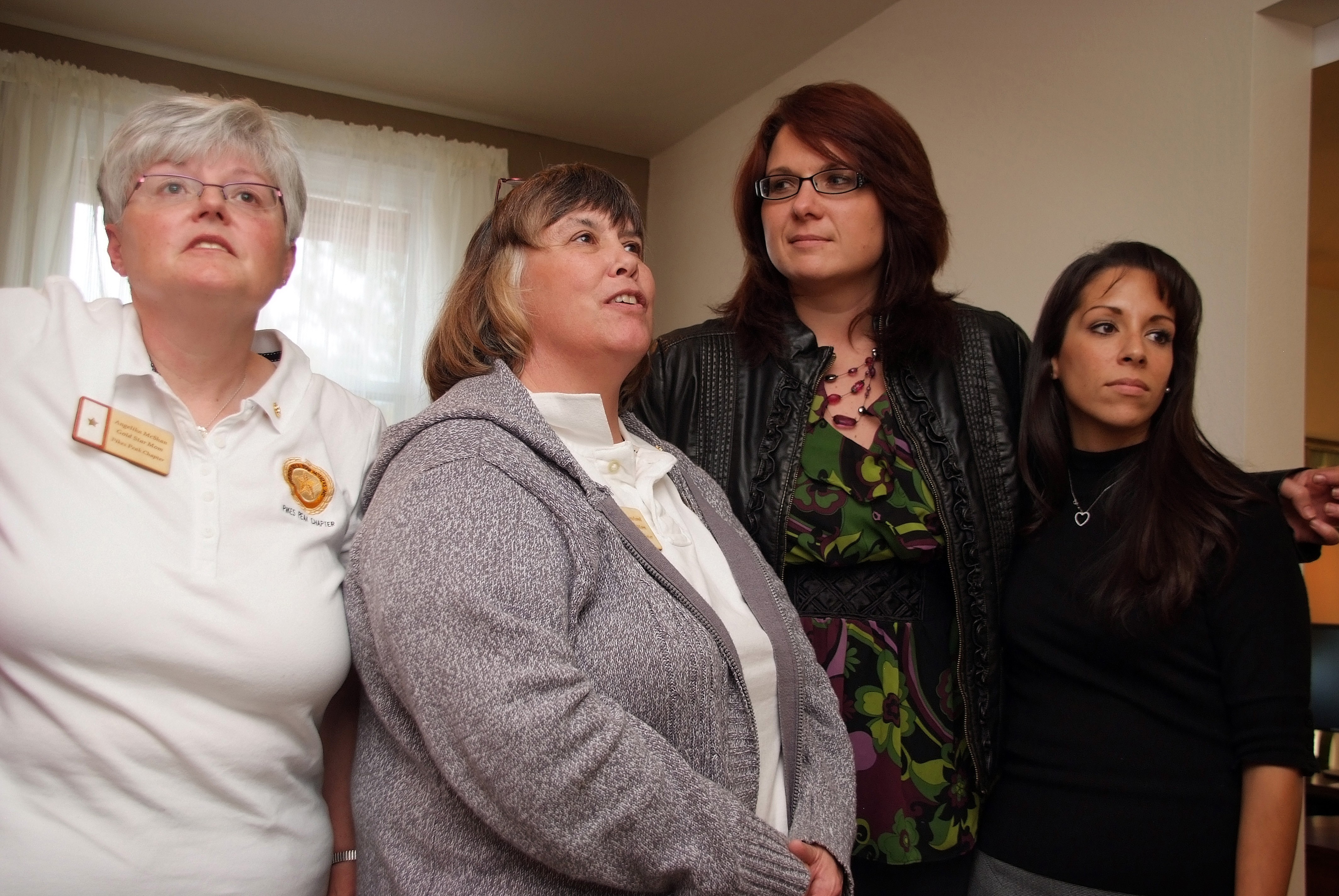Suddenly losing a loved one reveals life\'s frightening unpredictability. "The whole first year was a fog - I don't remember the funeral or memorial service," said surviving spouse Allyson Blackwell, alongside two mothers inside the Fallen Heroes Family Center at Fort Carson, Dec. 14. Soldiers train to defeat enemy tactics but chaotic battlefield environments are, inevitably, uncontrollable. Blackwell's husband died in August 2007, after a 120 mm mortar exploded 10 feet from his position in Baghdad, she said. His death occurred five months after the birth of their first child. "The choice is to be bitter or better ... and that's an individual decision everyone needs to make," said Blackwell, who had recently submitted her husband's portrait for the Fallen Heroes Family Center's Wall of Remembrance. Created in October, the memorial honors lives lost in military service. "It's all about keeping his memory alive," she said, while seated beside Gold Star Mothers Debbie Rowland and Angelika McShan, who helped establish Fort Carson's commemorative wall. Name plates anchor each image posted under the title: "Remember the Love, Celebrate the Life, Share the Journey." Twenty-one memorial portraits adorned the Fallen Heroes Family Center Oct. 14, when the Fort Carson garrison commander announced completion of renovations and initiation of Survivor Outreach Services. The Mountain Post began offering one-on-one counselors and support groups in a home-like atmosphere. Eight more parents and spouses submitted images of fallen heroes between October and December. The collage of portraits continued to exhibit military uniforms and civilian clothes, as well as composed poses and jovial gestures. "I'd like to fill all these rooms with photographs," said Rowland, referring to the sprawling ranch house. Her son unexplainably died in his sleep in August 2009, six months after a 15-month deployment to Iraq. The wall of remembrance is currently centralized in the main entry area. Rowland's mission to fill the center with photographs requires ongoing participation from grieving families. "There is a lot of support for military families today," said Rowland, "such as Survivor Outreach Services, Family readiness groups, the Warrior Transition Unit and housing. People are educating themselves about post-traumatic stress disorder and traumatic brain injury. The military has come a long way." Researchers Richard Tedeschi and Lawrence Calhoun suggest "the cognitive processing of trauma into growth appears to be aided in many people by self-disclosure in supportive social environments," according to their 2004 article "Posttraumatic Growth: Conceptual Foundations and Empirical Evidence." Tedeschi and Calhoun define post-traumatic growth as "positive psychological change experienced as a result of the struggle with highly challenging life circumstances." Fort Carson's survivor support extends through Colorado, Wyoming, South Dakota, North Dakota and Utah. Within that five-state area, more than 180 servicemembers have died during operations New Dawn, Iraqi Freedom and Enduring Freedom, according to the Department of Defense casualty reports Dec. 13. McShan highlights the thousands of troops wounded in action - those afflicted by combat injuries after leaving the battlefield. She says her son suffered traumatic brain injuries while deployed in Afghanistan, where one improvised-explosive device knocked him unconscious and another threw him from his vehicle. "As far as I'm concerned, my child is a causality of war," said McShan. "The wiring in his brain went wrong," she said, while describing events leading to her only son dying by suicide in April 2009, five months after redeploying from combat. While stationed in California, the Marine fired his final bullet using his nondominant hand; an action McShan says proved his state of confusion. "Our circumstances are different but we all lost a loved one," she said. "We all lost an important part of our lives. This is the place to find peace by talking to others." "We're the family you never want but you're so glad you have," said Blackwell, on behalf of the Fallen Heroes Family Center. "There is no such thing as getting over it - only getting through it - especially when your whole heart is invested in someone. "I look at other survivors and can tell when they need a hug. There is something in their eyes that only other survivors can see." "We're here for you," says Rowland to survivors considering involvement at the Fort Carson center. "You're not alone. Everything we can do to get you through this new life, we'll do it. We know how you feel, and we're here to help. "Every spouse's, child's, parent's fear is their loved one will be forgotten. We want to ensure that will not happen." Families must submit their servicemember's photograph, name, rank, branch, as well as year of birth and death. Contributions received by April 30 will display in time for a wall of remembrance dedication ceremony in early May, according to the Survivor Outreach Services program manager. Survivors may also plant memorial pavers in the serenity garden at Fallen Heroes Family Center. The bricks line the pathways with a three-line message containing the same information displayed on the wall.
Memorial features photos of fallen heroes
By Dustin Senger, Mountaineer staffJanuary 7, 2011




Social Sharing